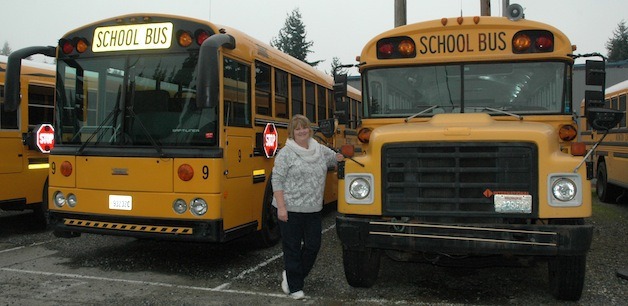ARLINGTON — When the Arlington School District ran its $3 million levy proposal in November, to replace 26 of its 53 buses, the measure received 48 percent approval, just shy of the simple majority needed to pass.
With the district running the levy again Feb. 10, the question becomes: What’s changed between now and then, that makes the district think the vote will turn out differently this time?
For one thing, the cost has gone down. Andrea Conley, public information coordinator for the district, noted that November’s proposal asked for 49 cents per $1,000 of assessed valuation, whereas the measure this time lowers that to 43 cents in the first year and 41 cents in the second year.
For a house valued at $184,300, which is the median home value in Arlington, a homeowner would pay approximately $6.60 per month the first year and $6.30 per month the second year.
“That’s the cost of a cup of coffee,” Conley said.
Another change that Conley touted is a more active citizens committee, which won’t be competing with other measures, such as fire district propositions, as they seek to hammer home the district’s degree of need.
“About a decade ago, the district went through a great deal of growth, so we had to send bonds out to the community,” Conley said. “We didn’t want to hit them up for a transportation levy at the same time, so we just kind of limped along, so that we wouldn’t take any money out of the classrooms.”
Conley blamed the economic downturn and other expenses, such as a maintenance and operations levy, with further delaying the replacement of these buses, 49 percent of which are older than 12 years, and the oldest of which is 28.
“We not only went from the smaller high school to the larger one, but we also added a middle school and two elementary schools to the district,” veteran bus driver Carol Mitzelfeld said. “Our buses just can’t keep up.”
Not only are the district’s buses driving about 4,800 miles a day, but the older ones are doing so without modern amenities such as automatic doors, antilock brakes, self-defrosting mirrors, more visible crossing bars and greater numbers of emergency exits per bus. The older buses’ small mirrors and windshields provide less visibility, and their seats are less padded for the safety of their student riders.
“We had a field trip to Seattle that broke down on the freeway,” Conley said. “We had to switch around all our bus routes to get everyone home.”
As replacement parts for the older buses become harder to find, it becomes more costly and difficult to maintain them.
This levy is part of the district’s plans to receive reimbursement from the state over the next 12 years, in a designated fund for future bus purchases, which would allow them to buy even more new buses 13 years from now.







